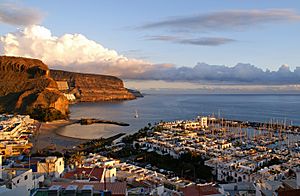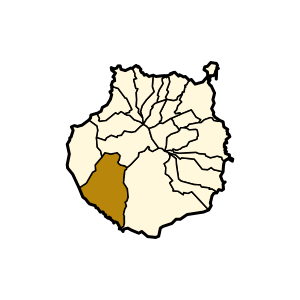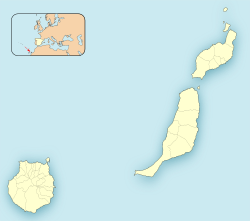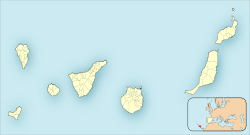Mogán facts for kids
Quick facts for kids
Mogán
|
|||
|---|---|---|---|

Mogán port
|
|||
|
|||

Municipal location in Gran Canaria
|
|||
| Country | Spain | ||
| Autonomous Region | Canary Islands | ||
| Province | Las Palmas | ||
| Island | Gran Canaria | ||
| Area | |||
| • Total | 172.44 km2 (66.58 sq mi) | ||
| Elevation
(AMSL)
|
253 m (830 ft) | ||
| Population
(2018)
|
|||
| • Total | 19,657 | ||
| • Density | 113.993/km2 (295.241/sq mi) | ||
| Time zone | UTC+0 (CET) | ||
| • Summer (DST) | UTC+1 (CEST (GMT +1)) | ||
| Postal code |
35140
|
||
| Area code(s) | +34 (Spain) + 928 (Las Palmas) | ||
| Website | www.mogan.es | ||
Mogán is a charming town and a municipality located on the southwestern side of Gran Canaria island. Gran Canaria is one of the three main islands that form the Province of Las Palmas in the Canary Islands, Spain. Mogán is known for its beautiful coastline and lovely villages. As of 2013, about 21,782 people live here. The total area of Mogán is 172.44 square kilometers.
Contents
Exploring Mogán's Geography
Mogán is the second largest municipality on Gran Canaria island. A municipality is like a local government area. It includes popular fishing towns such as Puerto de Mogán and Arguineguín. Many people who live in Mogán reside near the Atlantic coastline.
The main town of Mogán is about 8 kilometers away from the coast. It is also 11 kilometers north of Puerto Rico de Gran Canaria and 40 kilometers southwest of Las Palmas. The main road, called the GC-1 motorway, runs through the southern part of Mogán. Along the coast, you will find many popular places for tourists to visit.
Main Towns and Villages
Here are some of the main places you can find in Mogán:
- Arguineguín
- Cornisa del Suroeste
- Mogán (the main town)
- Playa de Mogán (Mogán Beach)
- Puerto de Mogán (Mogán Port)
- Puerto Rico
Mogán's Population Over Time
The population of Mogán has changed quite a bit over the years. This table shows how many people have lived there at different times:
| Historical population | |||||||||||||||||||||||||||||||
|---|---|---|---|---|---|---|---|---|---|---|---|---|---|---|---|---|---|---|---|---|---|---|---|---|---|---|---|---|---|---|---|
|
|
||||||||||||||||||||||||||||||
As you can see, the number of people living in Mogán has generally grown. This shows that it is a popular place to live and visit!
Important Historical Sites
Mogán is home to several important historical places. These sites are protected because they teach us about the past. They are called "Property of cultural interest."
Archaeological Discoveries
Archaeology is the study of human history through digging up old things. Three special places in Mogán are listed as "archaeological zones":
- The Cats' Ravine: This place is also known as cañada de los Gatos or Lomo los Gatos. It is found where the Mogán ravine meets Mogán beach. It holds secrets from ancient times.
- The Valley of the Sea: This area, called cañada de la Mar, was also named an important archaeological zone in 2005. It is another spot where old artifacts have been found.
- Veneguera's "Cogolla": This site, known as La Cogolla de Veneguera, is located high up in the Veneguera ravine. You can find it in the northwest part of the municipality.
Ethnological Heritage
Ethnology is the study of cultures and peoples. Mogán also has an important "ethnological site."
- Mogán's Windmill: This old windmill is called "molino quemado de Mogán" which means "burnt mill of Mogán." It has been listed as a heritage site since 2002. It tells us about how people used to live and work in the area.
Images for kids
-
Puerto de Mogan, with coconut palms.
See also
 In Spanish: Mogán para niños
In Spanish: Mogán para niños











